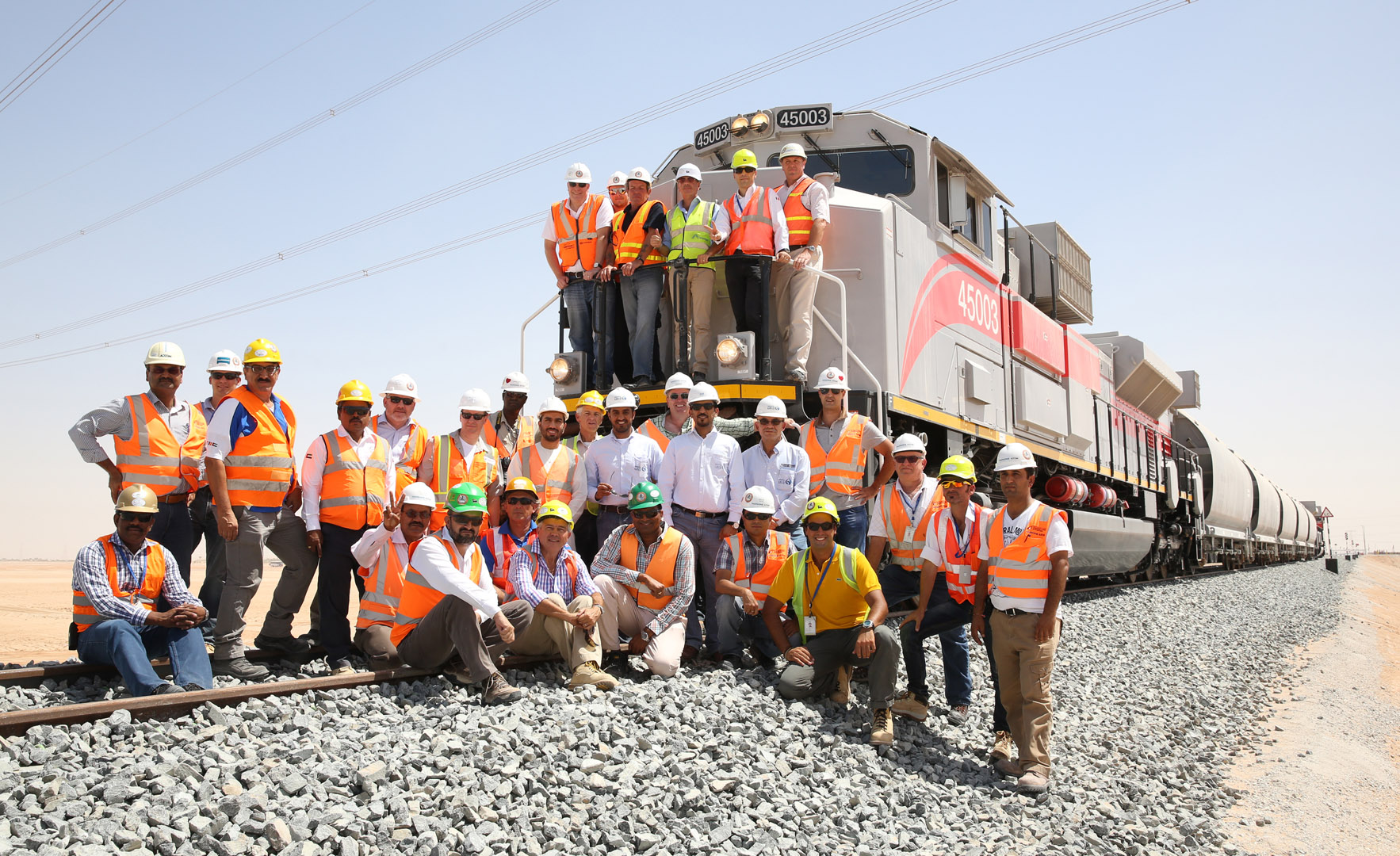The project
Etihad Rail Stage 1 is the first railway in the United Arab Emirates and is one segment of the country’s rail network, which will be part of the Gulf Cooperation Council (GCC) project connecting the United Arab Emirates, Oman, Saudi Arabia, Qatar, Bahrain and Kuwait by rail.
The railway carries 7 million tons per year of granular sulphur from the Shah and Habshan gas fields to the port of Ruwais using two trains, each 1.9 kilometres long and with 110 cars. Overall, the two trains transport 11,000 tons of sulphur every day.
Key facts and figures
Project impact
The rail network will initially provide freight service, followed later also by passenger service, with social benefits and a reduction in road traffic: a single train can carry as much freight as 300 trucks, reducing greenhouse gases by more than 2.2 million tons annually.
The greater accessibility will encourage population growth and foster tourism and industry in the western region of Abu Dhabi, creating employment opportunities and allowing easier access to remote communities.
An extraordinary project
The main challenges consisted of operating in a desert area, the need to overcome a difficult terrain and adverse climatic conditions, and having to deal with some 40 stakeholders involved in the project for the first railway line in the United Arab Emirates.
With an impressive number of level crossings, the railway passes through more than 50 km of sensitive desert areas with dunes as high as 150 metres. Construction involved 93 million cubic metres of earthworks in 2 years.
The project was extremely challenging, with only 34 months scheduled for the construction of 264 km of railway and the completion of operational and maintenance facilities. Nevertheless the civil and railway works for Section 1, a 142 km section, were completed in just 18 months, with a peak of 78 km of track laid in a single month.
There was much curiosity among the people living near the railway, causing great safety risks. The team organised meetings and awareness campaigns to inform people of the dangers they were exposed to when approaching level crossings.
Saipem can be considered the pioneer that brought the first railway to the United Arab Emirates. This was made possible by the total commitment of the Project Team, aware of the historical significance of a project destined to have a great impact on the future of the United Arab Emirates.
The project and the team that took part in its construction have also been awarded several prizes.

Technological challenges
To keep sand from accumulating on the tracks, a metrological analysis for identifying high-risk areas was conducted; Saipem devised sand mitigation solutions that do not involve the use of plant barriers.
The use of aerodynamic principles, together with sand motion modelling, using CFD (Computational Fluid Dynamics) analysis inside a wind tunnel, led to the development of a combination of profiled and faced embankments. The solution was tested in the field and then applied to the entire line. To date, sand contamination in the ballast has remained less than 3%.
A special database was created to manage railway operations and maintenance, with over 40,000 resources and millions of data transferred to the Project Maintenance Management Information System.
Assets and people
More than 4,000 workers and 1,000 pieces of equipment and machinery on site at full capacity; 5 active construction sites with 30 subcontractors working at the same time, over 35 million man-hours with positive health, safety and environment results.
The project is fully compliant with the Pearl Rating System, the Estidama program green housing evaluation system in the United Arab Emirates, thus making it an example of sustainability.
Key takeaways
The success of the first railway built in the United Arab Emirates is the result of Saipem’s ability to manage complex projects and to face any challenge, acting as a reliable general contractor for any infrastructure client.
At Saipem Infrastructures we have the skills and know-how to find fast, efficient solutions and the ability to adapt to each different situation, combining our experience, our ability to innovate and our engineering potential with our vision of the future.